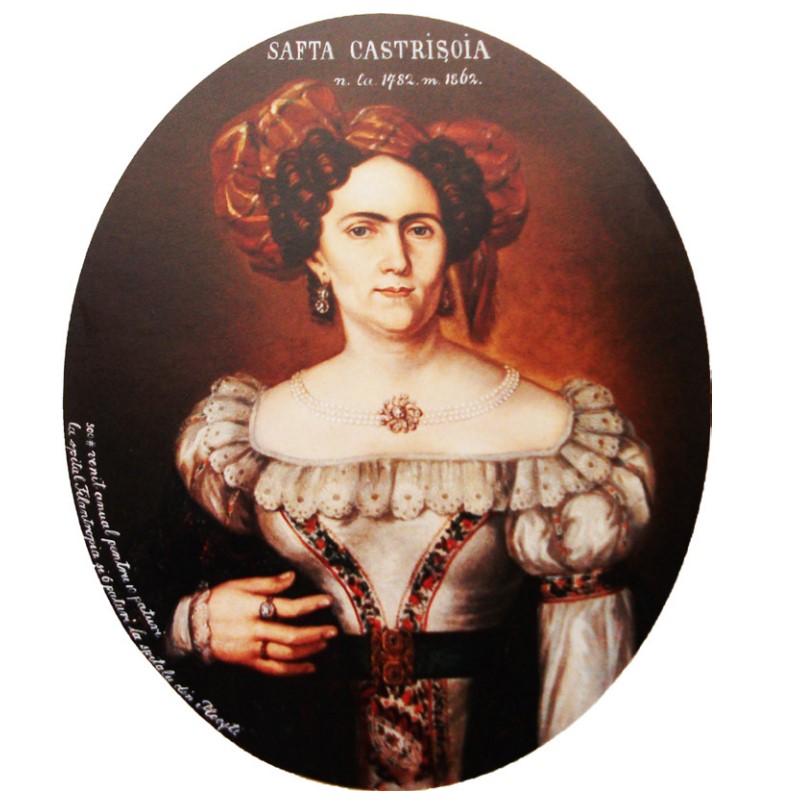By Nicoleta Roman, WG3 (Coordinator of the ‘Across Europe, from early modern to present times. Migrant women and their unknown success stories’ project)
Nicolae Iorga’ Institute of History-Romanian Academy & New Europe College-Institute for Advanced Study, Bucharest
This story comes from the world of Balkan merchants, influential on the commercial routes of the early modern Ottoman Empire. The Balkan merchant community was defined by an ethnic and religious identity, all of them coming from the same European region as the name suggests (Greeks, Macedonians, Serbs, Bulgarians etc.) but also Orthodox by faith. They made successful commercial networks that linked todays Turkey with Bulgaria, Romania, Austria, Italy and/or France. One of these merchants who gained a good reputation as a tradesman was Gheorghe Castrișiu (Kastrisiu). His merchandise was sent in trunks marked ”G.K.” from Bucharest the capital of Wallachia, a principality and a province of the Ottoman Empire – part of nowadays Romania – to the Habsburg area from 1802 onwards.
Both Gheorghe Castrișiu and his wife, Safta (1782-1862), came from Greek speaking-territories together with their families to the Romanian lands. While we do not know when they married and established themselves in Bucharest, it is certain that at the beginning of the century they were already in the city. Through Transylvania, Gheorghe Castrișiu made economic partnerships and became part of a commercial network that reached Vienna and Budapest trading products such as boxes of gold cigarette cases, bales of coffee, cloth, muslin and so on. He died around 1810 and his widow, Safta, inherited his entire fortune. This is the moment when she gets out from the shadow of her husband. Under Safta Castrișiu’s management, the fortune that was previously built around several shops completely transformed. Safta Castrisiu owned numerous properties and all her trade shops were located in the central area of Bucharest. In 1826 she bought several others and developed an entertainment area with a terrace. The latter seems to have been a place of refuge for participants in the 1848 Wallachian revolution, being also reputed to tolerate prostitution. Located on the Mogoșoaia Bridge (nowadays Calea Victoriei) – a luxury commercial avenue – the inn (Castrisoaia’s Inn) was her most important property. Foreign travellers, consuls, boyars and their equipages often took this road which was to become the main shopping street in the capital, often compared with the French Champs-Élysées. The entire area where she lived and managed her business was cosmopolitan and displayed a strong Macedonian imprint. Two other rich Macedonians lived nearby her, one of whom was called Petrovici-Armis. By the end of the nineteenth century, he kept an Albanian guard in front of his house, wearing a kilt, a fez hat, and guns at his girdle. In this way, the whole urban community tacitly agreed to present an ethnic identity within a commercial zone that was highly frequented in Bucharest.

Like all the merchant families, the Castrișius aimed to establish a dynasty and rival their competitors. Gheorghe and Safta had one son, Dimitrie, who died at only 31 years of age. The epitaph on his grave in the yard of Saint Dimitrie Church of Bucharest shows the aspirations that his mother, as a young widow, nurtured for him:
In my youth when happiness was above everything,
And everything seemed to be so promising,
I used to be the pillar of my family, my mother’s sense of gratitude
But the cruel razor cut this pillar
that blew away the flame of hope
In front of which my mother’s tears are quietly pale
The death of her son Dimitrie made Safta Castrișiu to reflect about the use of her fortune. Without direct heirs, she chose that after her death the money be used as to invest in rural education in Romania and to support philanthropic causes. These causes were: 1) a fellowship for a student in Paris; 2) financial aid for seven hermitages and the priests from the Saint Dimitrie Church in Bucharest, where her sun was buried; 3) local Romanian hospitals; 4) a girl’s dowry (each year) and 5) annual Easter and Christmas donations to the poor. Safta Castrisiu was one of the first women in Romania to devise a private economic system built around the revenues of her shops and properties to support those in need.
Today she is almost unknown to the public. Her only portrait is in display at the National Museum of Art in Bucharest and itshows a lady whose traits hint towards a strong personality. The turban and the veil are reminiscent of an Ottoman Orient while the ribbons and the dress mark the Western influences in fashion, with the pearls as a symbol of widowhood. The story behindthe portrait is partially retraced through these lines while more is still to come to light.
References:
Nicoleta Roman, Women in Merchant Families, Women in Trade in Mid-19th Century Romanian Countries in: Women, Consumption, and the Circulation of Ideas in South-Eastern Europe, 17th – 19th Centuries (brill.com) (open access)